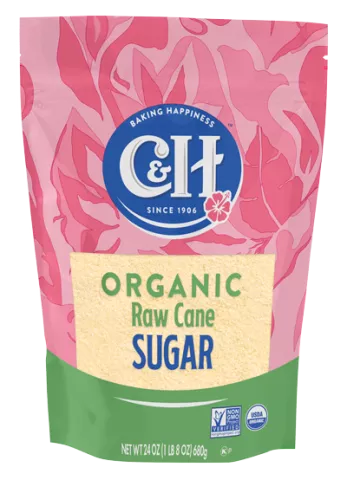Cane Sugar Processing: Typical Methods and Modern Innovations
Cane Sugar Processing: Typical Methods and Modern Innovations
Blog Article
A Comprehensive Guide to the Environmental Impact and Sustainability Practices in Walking Cane Sugar Processing
The environmental influence of walking cane sugar processing offers a complicated variety of difficulties that warrant careful assessment. From soil deterioration and excessive water usage to the carbon footprint connected with farming and manufacturing, the consequences of typical practices are far-reaching. In comparison, the fostering of innovative sustainability measures uses a pathway toward more responsible manufacturing methods. Understanding the interaction in between these issues is important for stakeholders in the sector. What specific methods can be implemented to strike an equilibrium in between efficiency and ecological stewardship? The solutions hinge on a better check out both the obstacles and possible solutions.
Overview of Cane Sugar Handling
Walking cane sugar processing includes a series of systematic actions that transform sugarcane into polished sugar. Initially, gathered sugarcane is transported to processing centers, where it undergoes cleansing to get rid of soil and particles. Following this, the walking stick is crushed to extract juice, which is after that cleared up by getting rid of pollutants through home heating and the addition of lime.
The made clear juice undertakes dissipation, where water is removed to focus the sugar material. These crystals are divided from the continuing to be syrup making use of centrifugation, resulting in raw sugar.
The end product is after that dried out and packaged for circulation. Throughout this whole procedure, preserving performance and top quality control is important to make sure the sugar meets industry standards. Each action in walking cane sugar processing not only adds to the end product yet additionally has effects for resource usage and waste generation, establishing the stage for conversations on sustainability and ecological influences related to sugar production.
Environmental Difficulties of Manufacturing
The manufacturing of cane sugar presents numerous considerable environmental challenges that warrant attention. One primary concern is the comprehensive use agrochemicals, including plant foods and chemicals, which can result in soil degradation, biodiversity loss, and contamination of local water resources. The overflow from sugarcane areas frequently brings these chemicals into nearby ecological communities, interrupting marine life and affecting the wellness of areas reliant on these water bodies.
One more difficulty is the high power usage connected with sugarcane handling. The boiling and refining phases need substantial warm, largely generated by melting nonrenewable fuel sources, adding to greenhouse gas emissions. In addition, the extensive acreage required for sugarcane cultivation can bring about deforestation and habitat destruction, additional intensifying climate change and threatening wild animals.
In addition, the labor techniques in some regions elevate ethical problems, as workers may face poor working conditions and poor earnings. This scenario commonly continues a cycle of destitution in local neighborhoods. Cane Sugar Processing. Resolving these ecological obstacles is vital for creating more sustainable practices in cane sugar manufacturing, ultimately profiting both the atmosphere and the areas included in this industry
Water and Land Usage Impact
Water sources and land application are vital parts in the walking cane sugar market that substantially influence the environment. The growing of sugarcane needs substantial water input, with estimates recommending that it can eat up to 2,000 litres of water per kilogram of sugar created. This intensive use of water commonly results in deficiency of regional water sources, affecting not just the sugarcane vineyards however likewise bordering ecological communities and neighborhoods that rely upon the same water resources for agriculture and domestic usage.

Furthermore, land usage for sugarcane growing can result in deforestation and the conversion of natural environments right into monoculture plantations. This method reduces biodiversity, interferes with neighborhood ecological communities, and adds to dirt degradation. The development of sugarcane fields commonly elbows in on important farming land, producing competitors for sources between food and biofuel manufacturing.
Sustainable techniques, such as maximizing watering techniques and implementing crop turning, are necessary to alleviate these influences. By embracing try this site extra efficient water use and land monitoring techniques, the walking stick sugar sector can reduce its environmental impact, making sure a balance in between farming productivity and ecological conservation.
Greenhouse Gas Emissions
Greenhouse gas emissions stand for a substantial environmental worry within the walking cane sugar handling industry, especially as agricultural practices broaden to satisfy worldwide need. The cultivation of sugarcane, a plant that grows in exotic environments, depends heavily on artificial plant foods and chemicals, which add to nitrous oxide discharges. In addition, land-use adjustments, consisting of logging for new sugarcane vineyards, launch co2 stored in greenery and soil.
Throughout processing, energy intake is one more major resource of greenhouse gas emissions - Cane Sugar Processing. Several sugar mills make use of fossil fuels to power equipment and produce heat, resulting in considerable carbon footprints. Additionally, the transport of raw sugarcane and completed items adds layers of discharges with fuel burning in vehicles
The cumulative effect of these exhausts aggravates climate change, positioning risks not just to the atmosphere however also to the lasting practicality of the industry. Stakeholders need to recognize the urgent need for thorough approaches that deal with these exhausts. This involves examining current farming methods, refining approaches, and transportation systems to determine areas for improvement and reduction. Dealing with greenhouse gas discharges is important for cultivating an extra lasting cane sugar sector in a changing environment.

Sustainable Practices and Innovations
Lasting practices and developments are significantly crucial in the cane sugar processing sector as stakeholders seek to lower ecological influences while keeping efficiency. One considerable innovation is site web the application of incorporated crop administration, which enhances source usage by integrating soil management, bug control, and crop turning methods. This approach improves return while lessening chemical inputs and maintaining dirt wellness.
In addition, the fostering of renewable resource resources, such as biomass from sugarcane residues, has gained traction - Cane Sugar Processing. By transforming waste products right into energy, processing facilities can lower their reliance on nonrenewable fuel sources, consequently decreasing greenhouse gas discharges
Water management techniques have likewise seen enhancements through the recycling and reusing of water in handling plants, substantially reducing freshwater intake. Technologies in modern technology, such as precision farming, enable farmers to keep track of crop wellness and source use better, making sure sustainable growing methods.
Additionally, accreditation programs like Fair Trade and Rain forest Partnership urge ecologically accountable farming practices and promote social equity within the supply chain. By welcoming these lasting practices and advancements, the walking stick sugar handling sector can improve its strength and add positively to environmental stewardship.
Final Thought
The environmental effect of cane sugar processing offers significant obstacles, including dirt deterioration, high water usage, and greenhouse gas exhausts, along with honest worries connected to labor practices. Dealing with these concerns through sustainable techniques, such as incorporated plant administration, sustainable energy fostering, and water recycling, is important. By promoting socially equitable and eco accountable techniques in sugar manufacturing, the sector can minimize its adverse results, making certain a much more sustainable future for both areas and ecological communities associated with this sector.
Walking stick sugar processing entails a collection of organized actions that change sugarcane into refined sugar. Each action in cane sugar processing not only adds to the final product however also has implications for resource usage and waste generation, setting the phase for discussions on sustainability and ecological influences connected with sugar manufacturing.
Greenhouse gas emissions stand for a considerable environmental problem within the walking stick sugar handling industry, specifically as farming techniques increase her comment is here to fulfill international demand.Sustainable techniques and advancements are increasingly essential in the walking cane sugar processing sector as stakeholders look for to minimize environmental impacts while maintaining efficiency.The environmental influence of walking cane sugar handling presents significant difficulties, consisting of soil destruction, high water consumption, and greenhouse gas exhausts, alongside ethical issues associated to labor methods.
Report this page